Type of Trees
Bonsai are largely categorized into two groups based on their species: shōhaku (pines, junipers, and other evergreens) and zōki (deciduous trees). A bonsai can then be further characterized depending on its shape (called a bonsai style), such as by the number of trunks it has or by the direction the tree is growing overall.
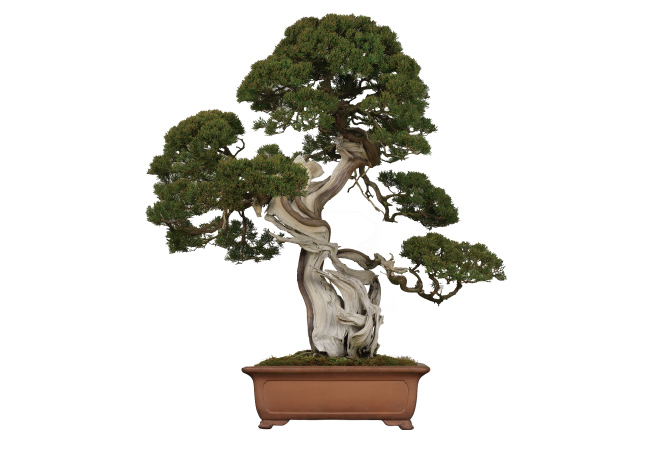
Japanese Juniper
-
Shōhaku Bonsai
Conifers, with their evergreen needles, rank as the prototypical bonsai. Especially beloved are pines and junipers, together called shōhaku trees. The roots and trunks of shōhaku bonsai, in their great vitality, are displayed in a variety of beautiful forms.
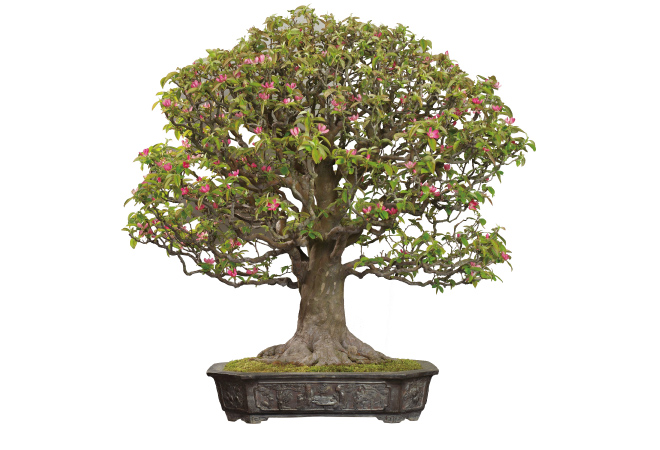
Chinese Quince
-
Zōki Bonsai
Zōki, in contrast to shōhaku, display a variety of changes with the progression of the seasons. Viewing points vary by the species; Japanese maple and trident maple are well known for how their leaves change color in autumn, while others, such as wisteria and azalea, called hana-mono bonsai, are enjoyed for their flowers. There are also mi-mono bonsai, such as the Japanese quince, which bear fruit.
Shape of Trees
Chokkan and Moyō-gi
The chokkan style (formal upright) with a single upright trunk, is one of the basic styles of bonsai. Alongside chokkan trees, moyō-gi (informal upright) trees, with their varied trunk forms, make up the most archetypal bonsai shapes. There are also other styles of bonsai defined by the shape of the trunk, such as shakan (slanted trunk), sōkan (twin trunks), and sankan (triple trunk).
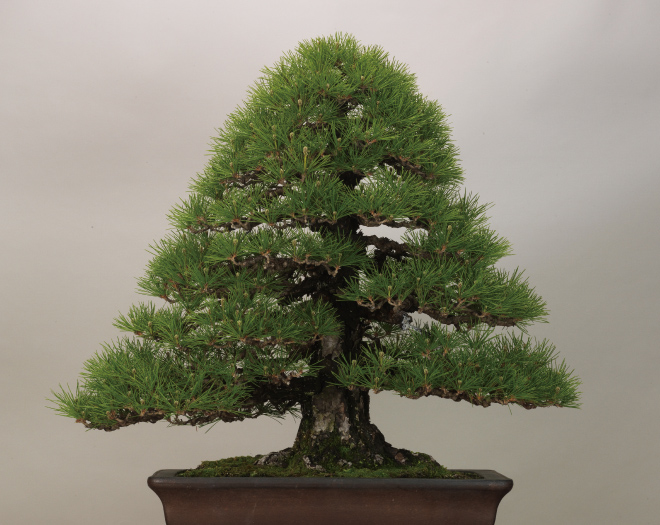
-
Chokkan Style Japanese Black Pine
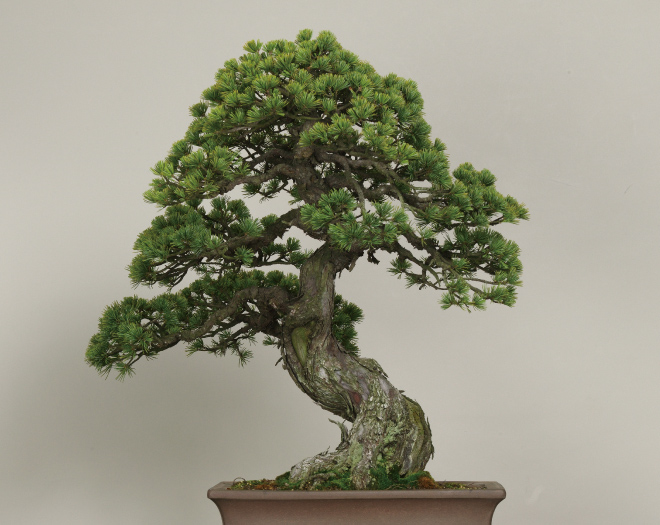
-
Moyō-gi Style Japanese White Pine
Fukinagashi and Kengai
These bonsai are meant to evoke the image of a tree persevering against the severity of nature. Fukinagashi, meaning “windswept”, is a style of bonsai where the trunk grows out at an angle, giving off the impression of a tree blown and tossed about in a strong wind. Kengai, or cascade, is also a style of bonsai with its distinctive feature being that it depicts a tree hanging down from a sheer cliff.
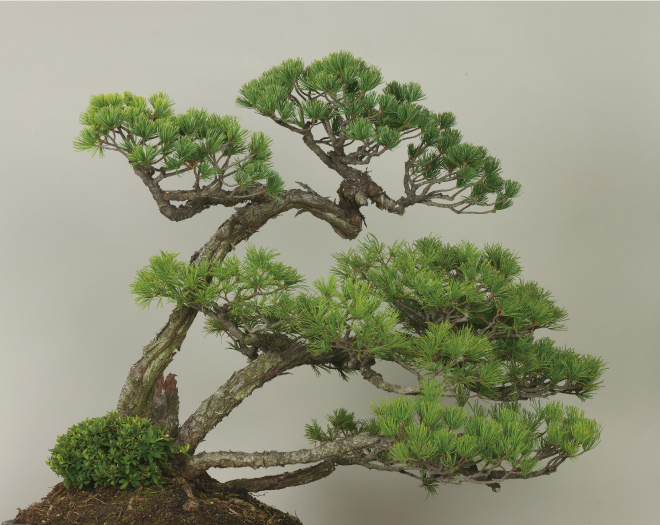
-
Fukinagashi Style Japanese White Pine
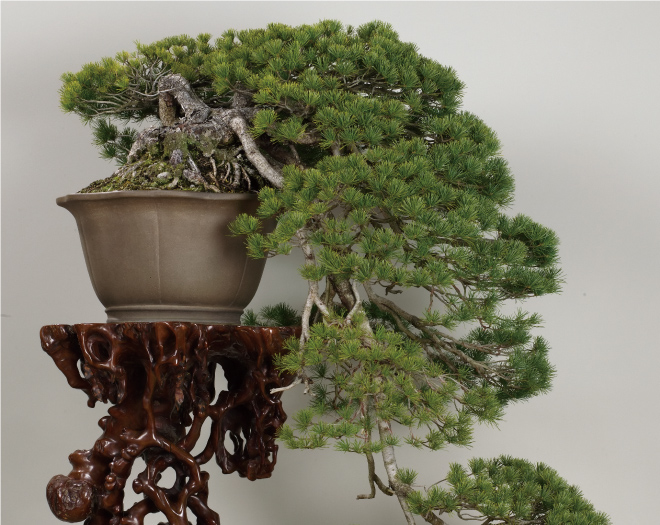
-
Kengai Style Japanese White Pine
Ne-tsuranari and Yose-ue
Ne-tsuranari is a form of bonsai that displays multiple trunks sprouting from a single root base, appearing huddled together. Yose-ue bonsai (literally meaning group plantings) are made to depict a graceful forest vista.
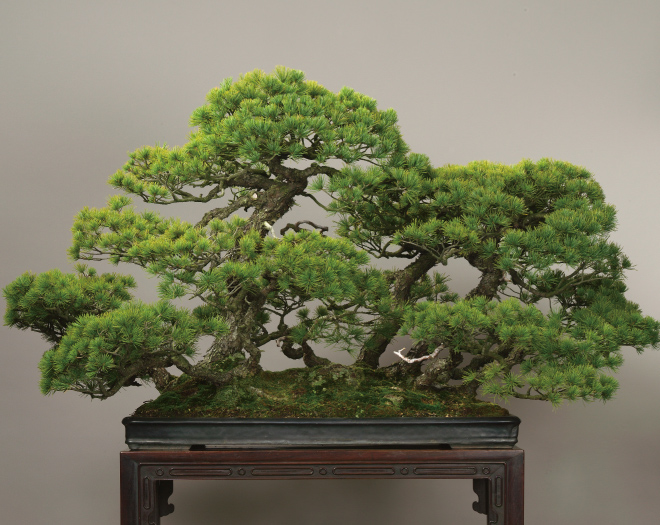
-
Ne-tsuranari Style Japanese White Pine
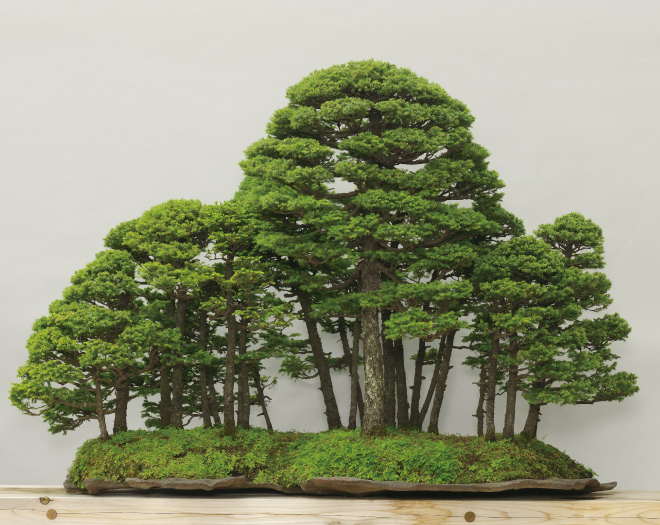
-
Yose-ue Style Ezo Spruce



